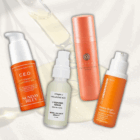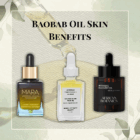Table of Contents:
Blue Tansy: What Is It?
How is Blue Tansy Oil Extracted?
How Blue Tansy Benefits Your Skin?
Is Blue Tansy Oil Made Sustainably?
Is There a Risk in Adding Blue Tansy to Your Routine?
How Does Blue Tansy Oil Smell?
Our Top Picks
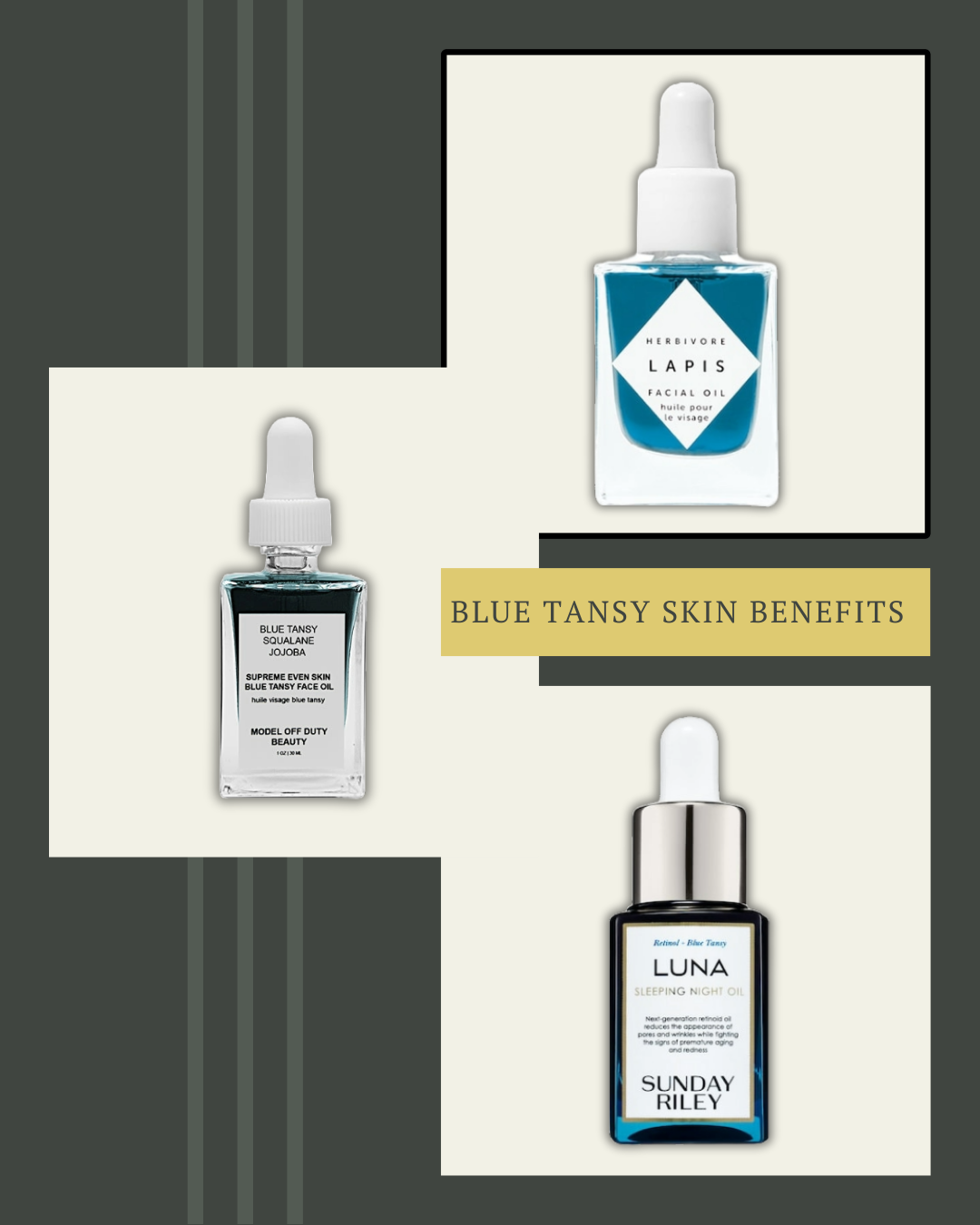
Blue tansy oil can be a powerful addition to your skincare routine, offering a range of benefits. However, before you dive in, it’s essential to understand how it’s sourced, what makes it effective, and the potential downsides associated with it.
Now, full transparency, I’m not a fan of how blue tansy smells. Despite its popularity, I prefer other oils for achieving clearer, more balanced skin.
Still, setting my opinion aside, let’s explore what makes this ingredient so loved in the skincare world.
Blue Tansy: What Is It?
Tanacetum is a genus of flowering plants from the Asteraceae, or aster, family. The variety used in skincare, commonly known as blue tansy, has the scientific name Tanacetum annuum. It belongs to the same plant family as German and Roman chamomile, making them close botanical relatives.
Despite its name, blue tansy blooms with small yellow flowers and has slender, white-fuzzed leaves. Native to Morocco, it’s often referred to as Moroccan Tansy.
When choosing skincare products labeled “blue tansy,” be sure to check the INCI list for Tanacetum annuum. This yellow-flowered chamomile relative is rich in chamazulene, the compound responsible for the oil’s deep blue hue once it’s extracted.
Chamazulene is the key phytochemical found in blue tansy oil. It helps calm inflammation and reduce signs of aging. This compound is also responsible for the oil’s distinct blue-green color.
When buying blue tansy products, always check the ingredient list. If it lists Tanacetum vulgare, which is beneficial but low in chamazulene, it’s not the same. Also, watch out for marketing images showing purple phacelia flowers, which are sometimes incorrectly labeled as blue tansy.
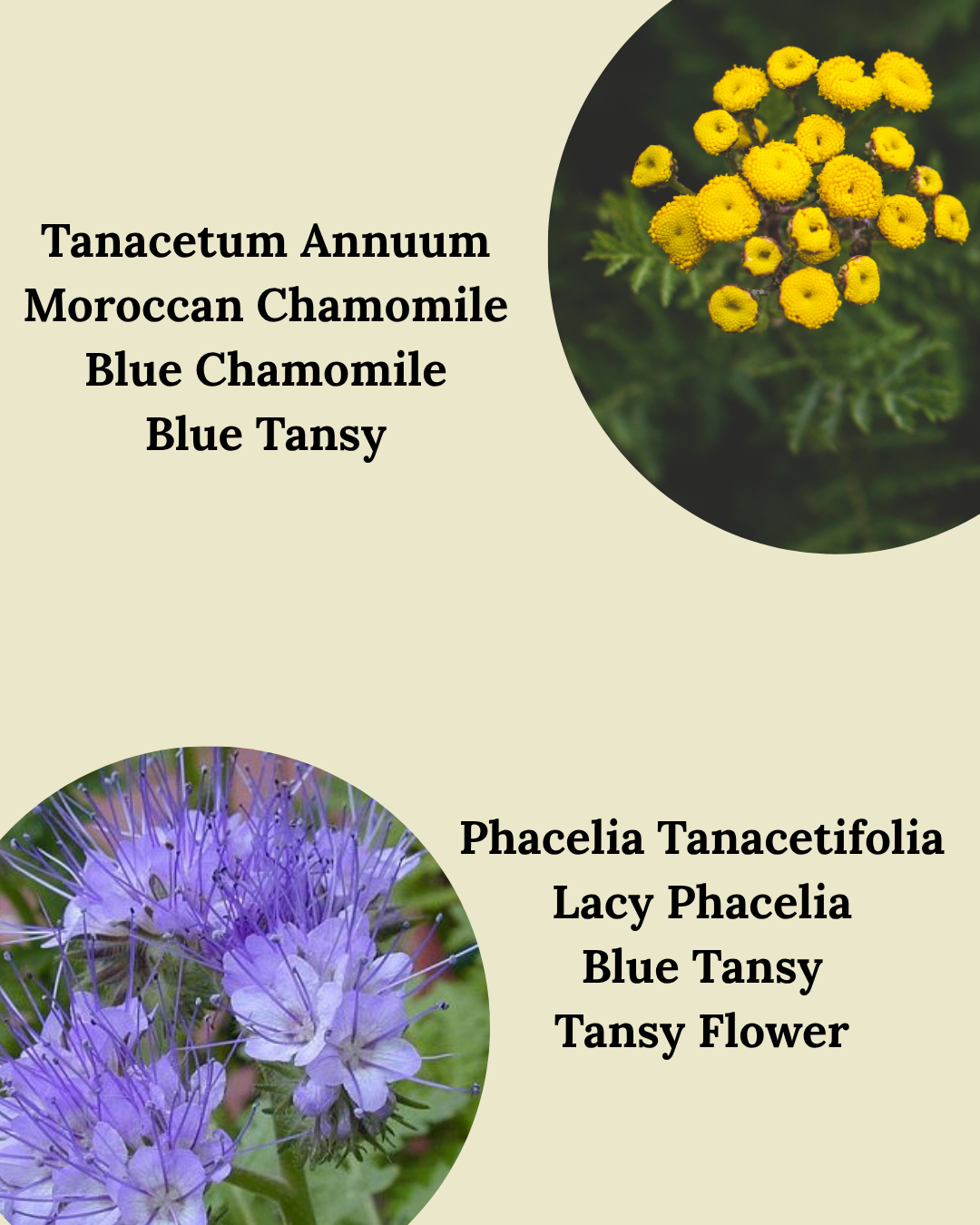
How is Blue Tansy Oil Extracted?
Blue tansy essential oil is typically extracted through steam distillation, though CO2 extraction using solvents is another method. Because the flowers are rare and the oil itself is delicate, high-quality blue tansy is not only limited in supply but also tends to be quite expensive.
How Blue Tansy Benefits Your Skin?
While blue tansy offers several skin benefits like other facial oils, it isn’t a carrier oil and should never be used undiluted. It must always be mixed with a suitable base before applying to the skin.
Chamazulene, the standout compound in this essential oil, acts as a powerful free radical scavenger, helping to protect and repair the skin from environmental damage. Blue tansy oil is widely recognized for its anti-inflammatory and antioxidant effects, and it also offers antibacterial and antifungal benefits.
There isn’t a wealth of scientific research backing blue tansy’s benefits just yet. However, one study on mice found that it helped improve the skin’s appearance after UV damage and showed promise in relieving itchiness and inflammation.
When using facial oils with blue tansy (Tanacetum annuum), you may notice several skin benefits, including:
- Clearer acne and reduced blemishes
- Defense against free radical damage
- Less inflammation, redness, and itching
- Soothed irritation and better skin hydration
Thanks to its anti-inflammatory properties, blue tansy oil may help soothe insect bites and even act as a natural insect repellent. When added to an anti-inflammatory spritzer, it can offer calming relief for sensitive skin in some individuals.
Additionally, blue tansy essential oil contains a high amount of camphor, a compound widely used in traditional Chinese medicine for its healing properties.
Is Blue Tansy Oil Made Sustainably?
Tanacetum annuum is a rare plant typically found growing along the edges of cultivated fields. Harvesting blue tansy is not an easy task, and due to its limited availability, the plant faces the risk of overharvesting, even though it is technically considered a weed.
Its scarcity and the challenges involved in extraction make blue tansy oil vulnerable to counterfeiting or dilution. If you choose to use this ingredient, it is important to ensure that the product comes from a transparent and reputable supply chain.
Is There a Risk in Adding Blue Tansy to Your Routine?
Blue tansy essential oil should always be diluted before use on the skin. It pairs well with most carrier oils, and using it undiluted can potentially stain both your skin and clothing.
Because it’s a potent essential oil, it’s important to stick to recommended dermal limits to avoid irritation or sensitization. Generally, safe usage falls between 0.5% and 1%, depending on the specific composition of the oil.
As with all essential oils, blue tansy can be irritating or sensitizing for some people. That’s why it’s important to patch-test any new product before applying it more broadly.
Some users claim that inhaling blue tansy’s aroma has calming effects, and a few even suggest it might help individuals with asthma. However, this is a risky and controversial claim.
Blue tansy contains camphor, a compound known to irritate the respiratory system and potentially worsen asthma symptoms. For any medical concerns, it’s always safest to consult a healthcare professional rather than self-treat with essential oils.
How Does Blue Tansy Oil Smell?
Depending on the source, blue tansy essential oil is often described as having a sweet, light, herbaceous, woody, earthy, or even pungent aroma. While many suggest that its scent has calming properties, this can be highly subjective; some find it soothing, while others consider it quite unpleasant.
Despite its distinct smell, blue tansy is frequently used in skincare for its ability to help tone and clear the skin. Its vivid blue hue also makes it visually appealing in oil-based, waterless (anhydrous) formulations. This is particularly attractive to natural cosmetic formulators, as most face oils tend to be pale yellow, greenish, or orange-tinged. A naturally blue oil offers a unique sensory experience, especially in a market where visual aesthetics matter.
However, creating vibrantly colored oil-based products can be challenging. To achieve a more pronounced blue tint, some brands incorporate additional ingredients like eggplant extract (Solanum Melongena), indigo powder (Indigofera tinctoria), or blue algae. Others use such small quantities of blue tansy that the signature scent becomes nearly undetectable.
Due to these limitations, including a strong aroma and muted color in larger doses, or overcompensation with other ingredients, many formulators ultimately decide to leave blue tansy out of their products altogether.
Our Top Picks
1. MODEL OFF DUTY BEAUTY
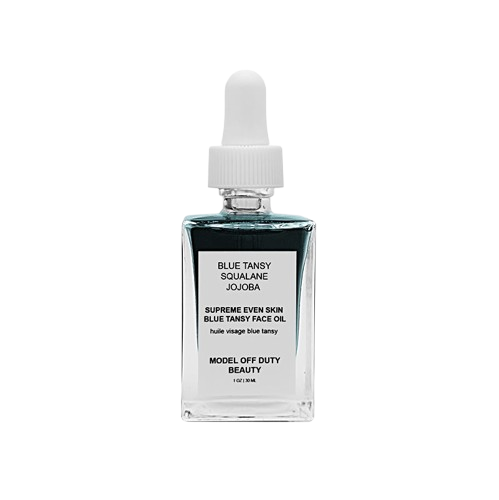
Model Off Duty Beauty Supreme Even Skin Blue Tansy Face Oil ($40) size: 1 oz
This lightweight face oil is excellent for calming all skin types and is a favorite face oil for acne-prone skin, Psoriasis, Eczema, Rosacea, and dry skin. Packed with powerful ingredients like Blue Tansy and Squalane to soothe and balance your skin.
2. HERBIVORE
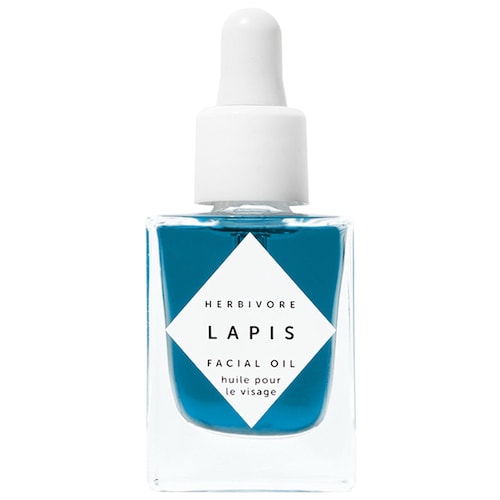
Herbivore Lapis Blue Tansy Face Oil ($58) size: 1 oz
This formula is made with pure plant oils to lock in hydration without clogging pores so that the skin can stop overcompensating and find the balance it needs.
3. SUNDAY RILEY
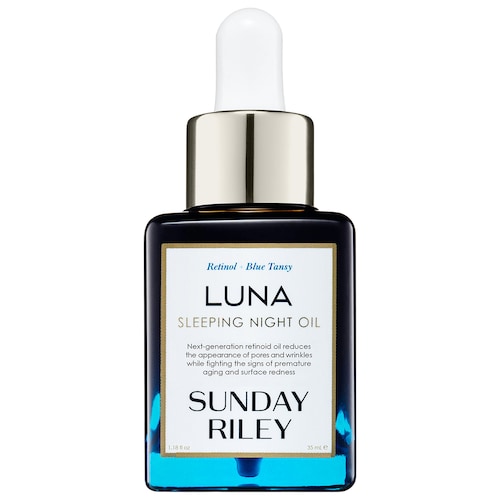
Sunday Riley Luna Sleeping Retinoid Night Oil ($105) size: 1.18 oz
A gentle oil perfect for new and experienced retinol users that’s balanced with blue tansy to improve the look of wrinkles, surface redness, and pores.
4. OAK ESSENTIALS
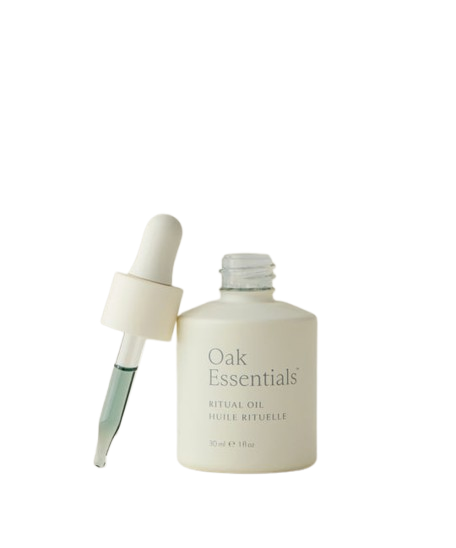
Oak Essentials Ritual Oil ($88) size: 1 fl oz
A lightweight vitamin-packed oil backed by the power of Blue Tansy that helps restore skin’s natural moisture barrier and soothes irritated, inflamed skin for a balanced, healthier-looking complexion.
5. EDENS GARDEN
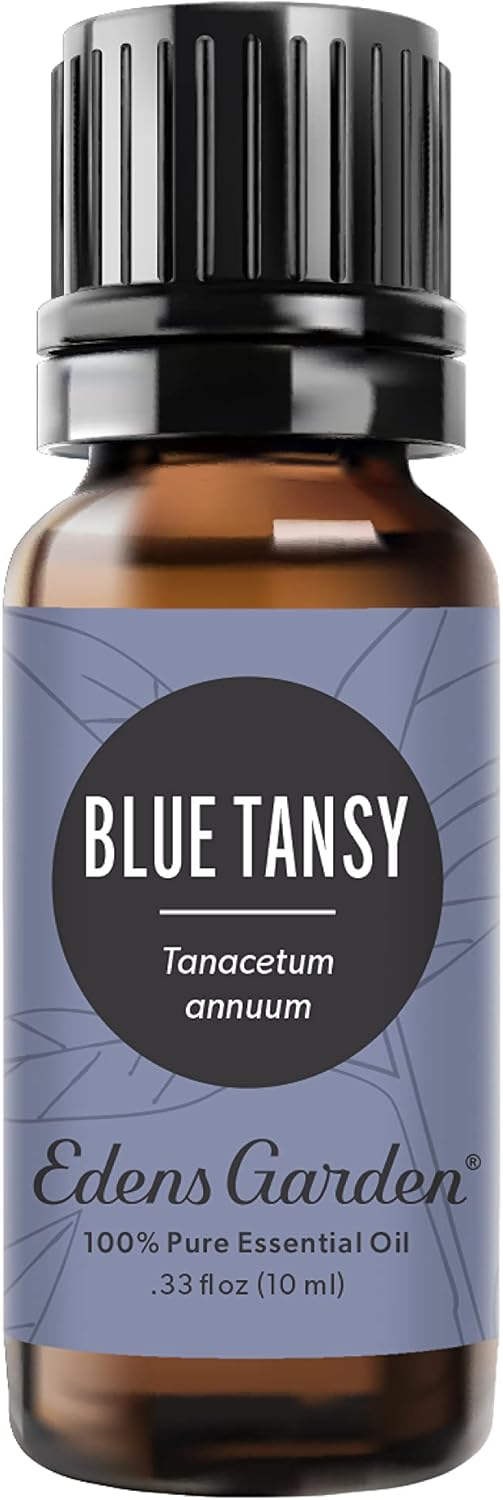
Edens Garden Blue Tansy Essential Oil ($122.95) size: 1 oz
Blue Tansy essential oil, an aromatic treasure likened to a fine wine for its rarity and complexity.
